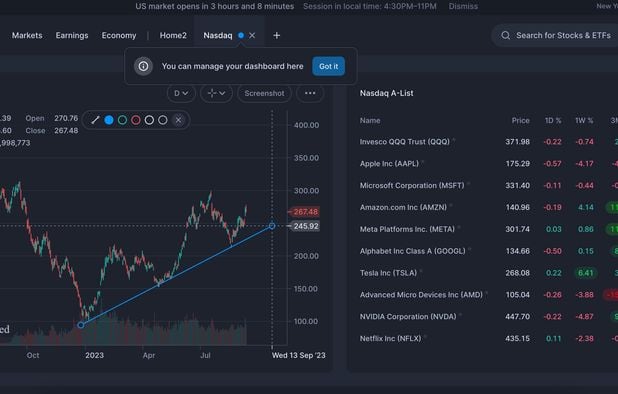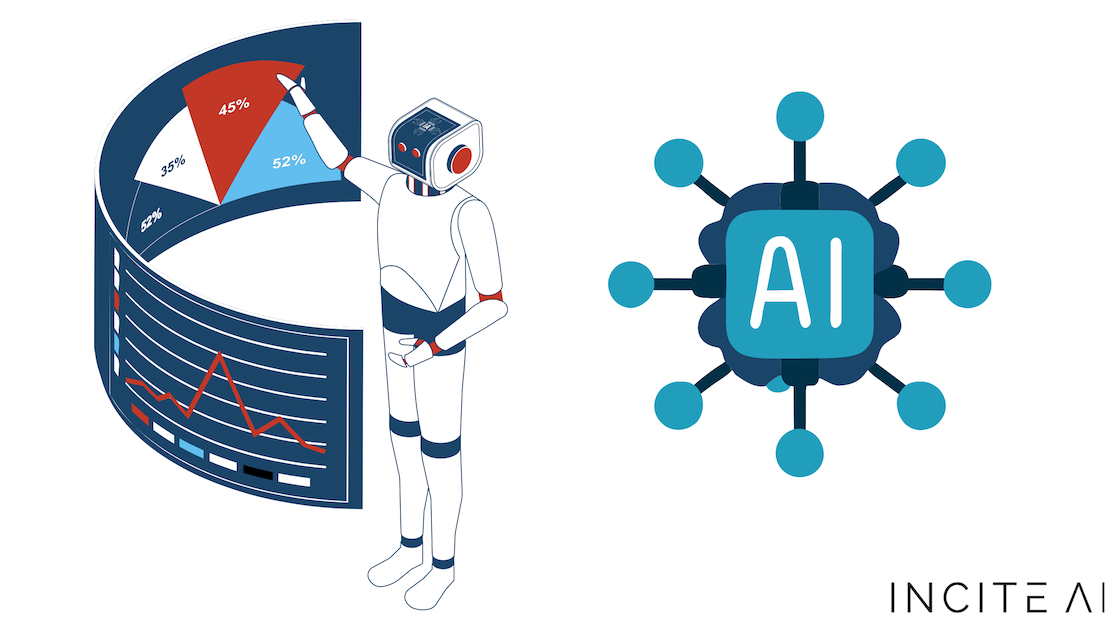20 Great Ways For Deciding On AI Stock Analysis Sites
20 Great Ways For Deciding On AI Stock Analysis Sites
Blog Article
Top 10 Tips On How To Evaluate The Strategy Customization Of Ai Trading Platforms
The ability to customize strategies is an essential characteristic of AI trading platforms that predict and analyze stocks, as it allows users to adapt the platform to their own specific goals in trading, risk tolerance, and market conditions. Platforms that offer a variety of customizations can enhance your trading. Here are the top 10 suggestions for assessing the strategy customization capabilities of these platforms:
1. Evaluate Pre-Built Strategy Templates
A variety of templates to choose from - Check to see if there are pre-built strategies that cater for various trading styles.
User-friendliness: Consider how easy it is to apply and modify these templates to meet your requirements.
Performance history: See whether you have access to historical data of the performance of strategies that you have already built.
2. Assess the Custom Strategy Development
Drag-and-drop: Find platforms that provide drag-and-drop interfaces for creating custom strategies.
Options for Coding: For more advanced users make sure the platform supports custom programming in proprietary scripting language (e.g. Python, R).
Flexibility: You need to be able define the entry/exit criteria along with risk management parameters as well as other components that are key to your strategy.
3. Check for Backtesting Capabilities
Data historical: Check if there are enough facts to back-test your strategies.
Flexible parameters - Make sure you can change parameters (e.g. timeframes, indicators) during testing backtests.
Performance metrics: Check if the platform offers specific performance metrics that can be used to backtest strategies (e.g. win rate Sharpe ratio drawdown, etc.).
4. Evaluate Real-Time Strategy Testing
Paper trading or simulation Check that the platform is compatible with paper trading that allow you to test trading strategies in real-time and without putting your money at risk.
Live testing: Check whether you are able to run strategies live in markets using tiny amounts of capital to evaluate their performance.
Real-time adjustments: Check if you are able to modify your strategies at a moment's notice according to the market conditions.
5. Evaluate the level of integration based on technological indicators
Indicator library - See if a platform provides a comprehensive collection of technical indicators, such as moving averages (e.g. RSI), MACD, or RSI.
Custom indicators: Make sure you are able to import or design custom indicators for your plans.
Find out if you can combine several indicators to make more complex strategies.
6. Check for Risk Management Tools
Stop-loss/take-profit: Ensure the platform allows you to set stop-loss and take-profit levels within your strategies.
Position sizing - Examine for any rules you could follow (e.g. a fixed amount or a percentage of your portfolio) to control the risk.
Risk-reward-ratio: Check the support of the platform to set risk/reward ratios for individual trades or strategies for trading.
7. Evaluate Multi-Asset Strategy Support
Asset classes: Make sure the platform supports various asset classes including ETFs, stocks and options.
Cross-asset strategies: Check whether you can develop strategies that involve multiple asset classes (e.g. Hedging, pairs trading).
Market coverage: Make sure the platform you're interested in is covered by the markets that interest you (e.g. US or international cryptocurrencies, copyright).
8. Evaluate Automation and Execution
Automated trading: Ensure the platform supports automated execution of strategies using predefined rules.
Types of orders: Ensure that the platform is able to execute different order types including stop, limit, market and stop.
Latency: Check if the platform can execute trades that have minimal latency particularly when using high-frequency strategies.
9. Look for tools for optimizing your strategy.
Optimization of parameters: Ensure that the platform provides tools to optimize strategy parameters (e.g. grid search or genetic algorithm).
Machine learning integration Check to see whether your platform supports machine learning in order to enhance and improve strategies.
Assessment of scenarios: Determine whether your platform is able of testing various strategies to deal with different market scenarios, such as bullish, bearish, or volatile.
Review User Feedback
User reviews: Review user feedback to evaluate the platform's capability to customize strategies.
Community forums: See whether the platform hosts an active community in which users share and discuss custom strategies.
Support resources - Ensure that the platform provides tutorials and documentation for users to develop and improve strategies.
Bonus Tips
Trial period: Try a free trial or demo to test the platform's strategy customization features.
Scalability - Ensure the platform you choose can adapt to your changing trading strategies.
Support for customers: Check whether the platform has support for strategy-related issues or queries.
These tips will aid you in assessing the capability of AI trading platforms to tailor their strategies. You'll be able to decide which one best fits your needs in trading and allow for you to refine and implement your strategy. A platform with flexible options for customization can allow you to adjust to changing market conditions and improve the performance of your trading. Read the top AI stock trading bot free advice for site tips including AI stock picker, ai investment app, AI stock trading app, AI stock trading app, AI stock, ai investment platform, options ai, best ai trading software, ai investment app, AI stock trading app and more.
Top 10 Tips For Assessing The Regulatory Conformity Of AI stock Predicting/Analyzing Trading Platform
Regulatory compliance is a critical aspect to consider when looking at AI trading platforms for stock prediction or analysis. Compliance assures that a platform adheres with financial regulations, is operating within legal frameworks, and safeguarding user data. This reduces the risk of legal or financial problems. These are the top 10 suggestions for assessing the regulatory compliance of these platforms:
1. Verify registration and licensing
The regulatory bodies: Make sure the platform is registered and licensed with appropriate financial regulatory bodies (e.g. SEC in U.S.A., FCA UK, ASIC Australia).
Verify the broker relationship: If your platform integrates with brokers and brokers, make sure they are also licensed and regulated.
Public records: You can check the official website of the regulatory body to see whether the platform has been registered and if there have had any violations over the years.
2. Take Data Privacy Measures Compliance
GDPR - If your site is located in the EU and/or provides services to users in the EU make sure it complies with GDPR.
CCPA - California Consumer Privacy Act: Verify compliance for California users.
Policies on handling data. Review the platform’s privacy policy and make sure it clarifies the ways in which data regarding users is used to collect, share, and kept.
3. Evaluating Anti-Money Laundering / AML Measures
AML policies: Make sure that your platform is equipped with a solid AML policy to identify and stop any laundering of money.
KYC procedures. Check whether your platform is following Know Your Customer processes for verifying user identity.
Monitor transactions: Determine whether the platform is monitoring transactions for suspicious activity, and then reports it to relevant authorities.
4. Check for Compliance With Trading Regulations
Market manipulation: Make sure that the platform is equipped to stop market manipulations such as spoofing, wash trading.
Types of orders. Check that the platform conforms to all rules regarding order type (e.g. there's no illegal stop loss hunting).
Best execution: Check to determine if the platform follows the best execution practices which guarantees that trades will be executed at the cheapest cost.
5. Cybersecurity Compliance:
Data encryption: Ensure that the platform protects data during the transfer process and in rest, using encryption.
Response to incidents: Verify that the platform has a crisis response plan in place for cyber-attacks or data breaches.
Certifications: Find out if a platform has been certified for cybersecurity (e.g. ISO 27001, SOC 2)
6. Transparency, Disclosure and Evaluation
Fee disclosure. Be sure that all fees and charges are clearly disclosed, including any hidden charges or fees.
Risk disclosure: Ensure that the platform discloses the risks involved, particularly in the case of high-risk strategies or trading with leverage.
Performance reporting - Check to see if there are precise and transparent reports on performance made available by the platform to its AI models.
7. Make sure you're in conformity with international regulations.
Transparency in trading across borders If you're trading internationally, ensure that the platform you use is in compliance with all regulations.
Tax reporting - Verify if a platform provides tools and reports that will assist users in complying with tax laws.
Conformity with sanctions: Ensure that the platform follows sanctions to the sanctions and will not allow transactions or trading with banned entities or countries.
8. Review Audit Trails and Record-Keeping
Transaction records: Ensure that the platform keeps accurate records of all transactions to ensure audit and regulatory compliance.
Logs of activity for users: Determine if the platform logs user activity, including transactions, logins, and changes to account settings.
Audit readiness: Ensure the platform has all the necessary documentation and logs for a regulatory review.
9. Evaluate Compliance with AI-Specific Regulations
Algorithmic rules for trading: If the trading platform supports algorithms, check that it is in compliance with the rules of MiFID II for Europe or Reg. SCI for the U.S.
Fairness and impartiality: Check the accuracy of the platform's AI models are monitored and tempered to prevent bias.
Explainability: Ensure that the platform has clear explanations of AI-driven predictions and decision making in accordance with certain laws.
10. Review the User's Feedback and the Review Regulatory History
User reviews: Read user reviews to determine the reputation of the platform's regulatory compliance.
History of regulation: Determine whether the platform has any past history of violations by the regulatory authorities and penalties, fines or fines.
Third-party audits: Check if the platform undergoes regular audits by a third party to ensure compliance with the regulations.
Bonus Tips:
Legal consultations: You might want to consult a lawyer in order to establish if the platform is compliant with relevant regulations.
Trial period for free: You may avail a demo or a free trial to test the conformity features of the platform as well as its documentation.
Support for customers: Ensure that the platform can provide support for customers with concerns or questions regarding compliance.
With these suggestions to evaluate the compliance with regulations of AI platforms for analyzing and predicting stocks, ensuring you choose an option that is within the legal framework and safeguards your interests. Compliance reduces legal risk and improves trust on the platform. See the most popular ai trading tool for site info including chart analysis ai, best stock prediction website, trading ai tool, chart analysis ai, can ai predict stock market, AI stock prediction, how to use ai for stock trading, AI stock prediction, can ai predict stock market, how to use ai for copyright trading and more.